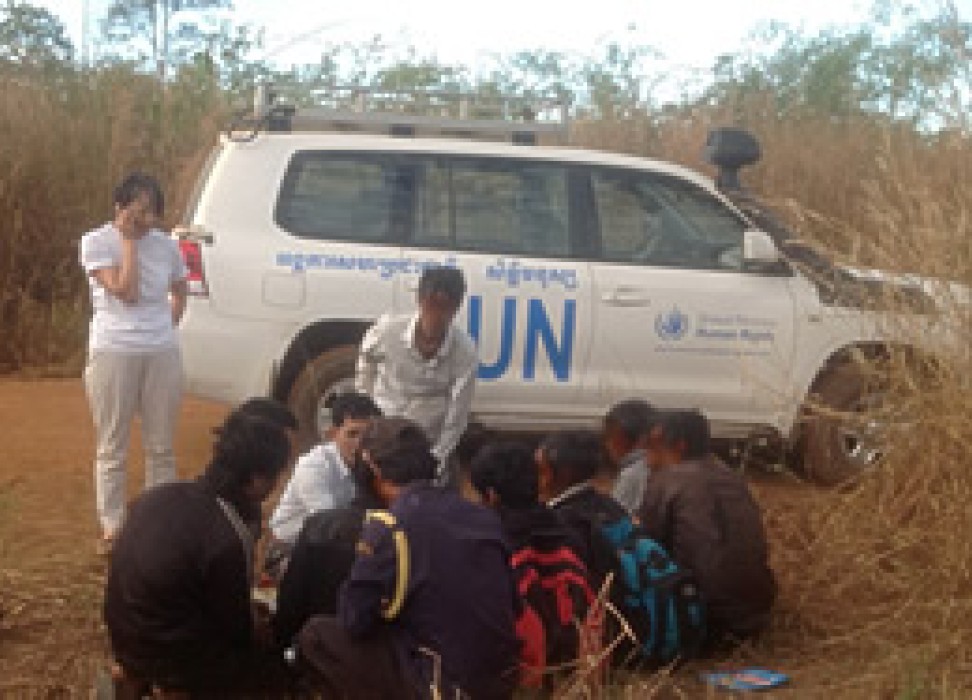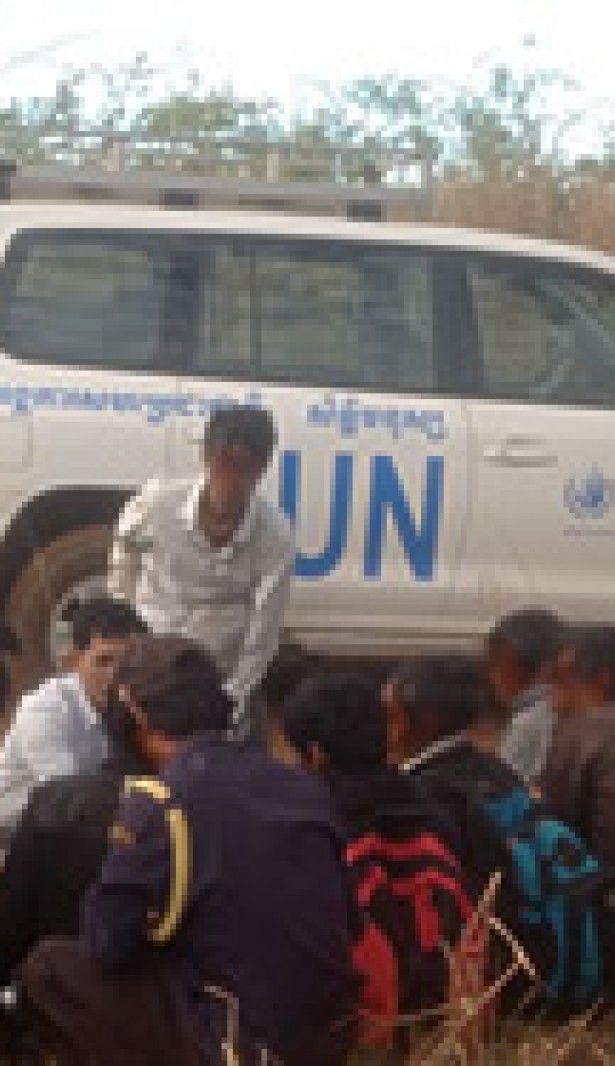Vietnamese asylum seekers rescued from Cambodian forests
23 December 2014

The group that presented itself at the side of the road to Wan-Hea Lee looked desperate.
Standing next to the United Nations vehicle, the eight Vietnamese Montagnards looked every bit their situation. They had been sleeping in the forest of north-eastern Cambodia for nearly two months, living on hand-outs and whatever they could find. Their clothes were unwashed, their hair filled with branches and debris from sleeping on the jungle floor. Their faces registered the hope of escape, of freedom in seeing the UN car.
But before she could grant them this escape, before they could be helped, Lee, who is the Representative for the UN Human Rights Office in Cambodia, had to hear from the group, from the individuals, what they wanted.
“Why did you cross the border into Cambodia?,” she asked the group, who had been hiding in the country’s Ratanakkiri province. One person responded, “To apply for asylum. We are treated badly for practicing our religion.”
“What about the rest of you? Are you all seeking asylum?” Lee asked. And to a person, each said “yes.”
“We were thrilled,” Lee said. “I knew at that moment they would be safe.”
The Montagnards said they were in hiding because they were afraid of being arrested and deported back to Vietnam. Montagnards are a loose denomination of some 30 ethnic tribes, who a mainly Christian hill tribe facing persecution in Vietnam because of their religious beliefs and because they sided with the USA during the war.
The journey to find the Montagnards required both diplomatic as well as physical stamina, Lee said. The Human Rights Office, along with colleagues from the UN High Commissioner for Refugees (UNHCR), spent weeks negotiating with central and provincial authorities. Provincial authorities insisted that the joint mission required authorization to enter the area to find the group. Lee disputed this, but recognized the practical need for the joint mission to secure the cooperation of the local authorities.
“Cambodia is a party to the 1951 Refugee Convention, which obliges the authorities at all levels to allow asylum seekers to apply. We’re just helping that to happen,” she said.” But if the local police decide to deport them nonetheless, it would matter little to the Montagnards how right we are.”
The European Union in Cambodia urged the Ministry of Interior to cooperate with the UN. It obtained a positive response from the Minister that if the people were found, cooperation with the UN would be welcomed. On the strength of that, the UN Human Rights office, UNHCR and the Ministry’s General Department of Immigration dispatched a mission to the area to find the group.
The mission met with resistance from the provincial authorities. Local security forces blocked the roads leading into the woods where the groups were said to be hiding, preventing the mission from locating the group. A long awaited meeting with the provincial governor was unfruitful. He continued to insist on seeing authorization for the mission to proceed. Meanwhile, sources said, the groups’ situation had become precarious, with some suffering from various physical ailments including possibly dengue fever and malaria. The police roadblock set up earlier was limiting the ability of the Montagnards to obtain food from nearby villages.
“These villagers had so very little to share to begin with,” she said. “When we heard about the illnesses amidst the continuing threats of deportation, that prompted us to really push forward our mission.”
The UN Human Rights Office team, along with officials from the government’s Ministry of the Interior stayed on. They let it be known through the media, the NGOs and the villagers, that the team was there ready to take custody of them if they presented themselves. Through an anonymous call, they learned that the first group of eight would come forward at a certain time and place. The team, led by Lee herself at this point, went out and met them.
The first eight were found quickly in the morning. The second group of five took longer. They had been apprehended by the provincial police and were being held at a police station. They were eventually turned over to the joint team.
Lee is unapologetic when asked why spend so much time and effort, physically and diplomatically, to retrieve 13 people from the Cambodia forests. There was a real fear for their safety if they were deported back to Vietnam, she said. And just as important was the symbolic significance.
Cambodia recently signed a controversial deal with Australia to accept refugees currently being held in the Pacific Ocean island nation of Nauru. The rescue and asylum application of the Montagnards, Lee said, allows Cambodia to assert its intention to abide by the Refugee Convention.
“It had to be understood that the authorities cannot be selective when it comes to asylum seekers,” Lee said.
She added this gives us a concrete case to use with other provincial governors who might also be tempted to deport asylum seekers before even asking them of their intentions, which unfortunately happens from time to time. It was thus a chance to demonstrate to provincial authorities that they too have to abide by international human rights law, she said.
The Montagnards are now with the Refugee Department of the Ministry of Interior, while UNHCR is handling their accommodation. For Lee’s office, its job is done, at least on this case.
“I couldn’t have asked for a better way to end the year,” she said.
23 December 2014

